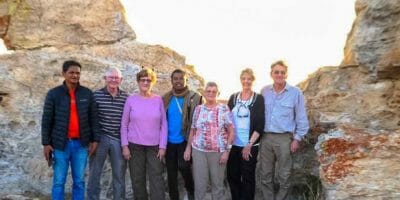
In Antsiranana, a man showed college students and high school students photos of men who have marked the history of Madagascar. Out of 6 shots exposed to the 20 adolescents, 3 large nationalist figures, namely Jean Ralaimongo, Jacques Rabemananjara and Jaona Monja, are recognized by two students aged 14 and 17.
Joseph Razafindrainib, professor of history at the Catholic high school Saint John Antsiranana, explains the cause of this ignorance: ” The photos of the historic characters of Madagascar are in the books. However, few young people, nowadays, still go to libraries, except for an appointment. »»
Paradoxically, access to technology, the democratization of the smartphone and the creation of pages and accounts dedicated to historical stories could be opportunities. However, international stars arouse much more reactions than the history of the country. The response of a 13 -year -old boy is also striking when a teacher asks him why he ignores these great Malagasy figures: “We haven’t shown us at school. An observation that pushes to think: should teachers project or circulate portraits in class to allow students to visualize the eras passed through the hairstyles and clothes of the old ones?
However, without wanting to blame teachers, you must also be realistic: how many schools in Madagascar have a projector or even a simple photocopier? Poorly paid and exhausted by the kilometers traveled on foot every day, non-official teachers often have to pay the handracks of geographic cards themselves, for example. A real sacrifice!
In this context, training historians redouble their efforts to revitalize their discipline. Over the past five years, many free conferences have been organized and several books published. Unfortunately, the public is still the same. To remedy this, some researchers try other ways to captivate the interest of young people. Professor Raymond Ranjeva, convinced that the seventh art is an excellent transmission tool, made a film on King Andrianampoinimerina. Titled Nampoinathis 1 hour 47-minute feature film retraces the last two years of the reign of this great monarch of the Imerina. Likewise, the biopic of the blessed Rasoamanarivo victory, although of religious orientation, offers a historic dive in the Madagascar of the 19th century.
Regarding regional history, it is still largely unknown. Apart from the songs praising kings and ampanjakaas well as some punctual events, it is still based on oral tradition. However, it would be interesting to produce, if only a documentary, on the sovereigns Sakalava or Tsimihety. In this area, Geoffrey Gaspard is an exception: cultural activist, he promotes the history of his region through two cinematographic works. Of course, such a project requires financial resources. But the investment would be comparable to that engaged each year for the Kawitry festivities. Everyone chooses where to invest, and the Malagasy cultural industry seems to favor what brings back quickly. “Sell quickly, sell more” is the dominant mentality. Thus, instead of aiming for international competition, many directors and videographers are satisfied with more lucrative musical clips.
In short, history must be known to everyone. Historians do their job: they are looking, write, publish. But these stories remain confined to the shelves of libraries. Meanwhile, the Malagasy lies with fascination Napoleon or Gladiator From Ridley Scott, while they too could create films on Andriamisara, Toera, Ratsimilaho or Tsimiaro II. It is high time to wear them in the cinema!
ISS HERIDINY
The post socio -cultural: the collective imagination to the detriment of the collective memory First appeared on Midi Madagasikara.
The socio -cultural article: The collective imagination to the detriment of collective memory appeared first in Mida Madagasikara.











